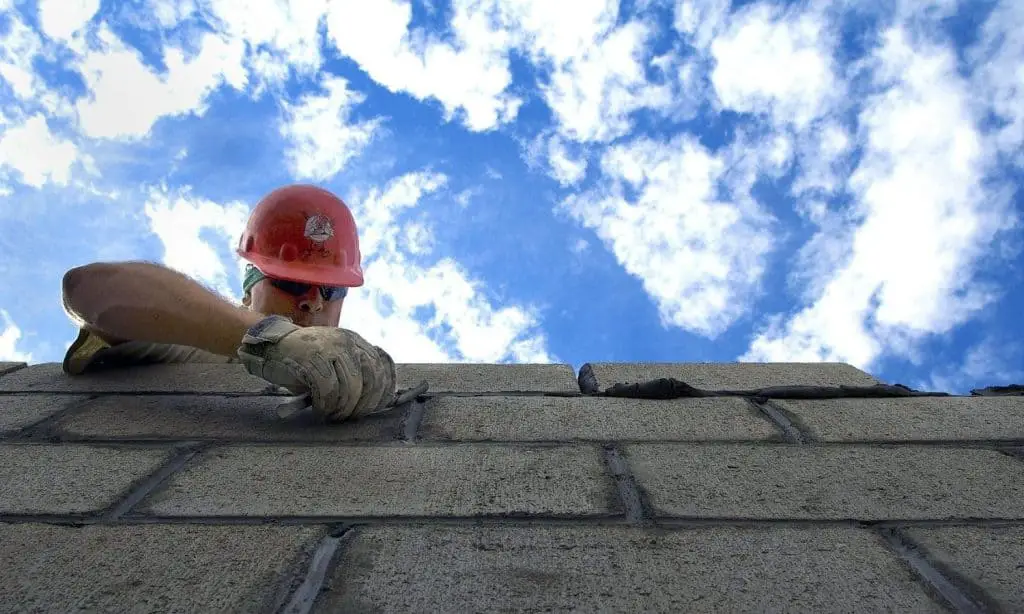In this post, you’re going to learn how to make bricks so you can start building different structures around the homestead.
Did you know that you can make bricks at home using a variety of different materials? At home, people make bricks out of clay and concrete all the time.
Even though both these bricks are made of different materials the construction process is very similar to some slight differences. If you want to know how to make your own bricks follow along with these detailed instructions.
Instructions Overview
This tutorial will cover how to make concrete and clay bricks.
Through this tutorial, you will learn how to make your own molds to create multiple bricks at a time. You will discover how to mix concrete effectively and what you can do to make sure that your concrete bricks don’t crack while they cure. Instructions are the same for both types of brick.
If instructions deviate concrete brick instruction will be listed first and clay brick instructions with being found under for clay bricks.
Supplies for Concrete Bricks
- 1 .75 inch plywood sheet
- 4 2x4x8 pieces of wood
- 1 bag concrete mix (80 pounds)
- 1 wheelbarrow
- 1 shovel
- 1 screwdriver
- 1 pkg of 3” screws
- 1 circular saw
- Water
- 1 pair safety goggles
- 2 plastic sheets
- 1 blanket
- Gloves
- Dust mask
Supplies for Clay Bricks
- 1.75-inch plywood sheet
- 4 2x4x8 pieces of wood
- 1 container of dried clay
- 1 pair of safety goggles
- 1 pkg of 3” screws
- 1 screwdriver
- 1 circular saw
- Water
Before You Start
You should always wear protective clothing; including, a dust mask, gloves, and goggles. Remember to follow all safety precautions when dealing with concrete as it is corrosive.
How to Make Bricks
- Making the forms
- Assembly
- Preparing the form
- Mix concrete and the clay
- Fill your mold
- Remove your bricks
- Creating texture in your bricks
Step 1: Making the Forms
The first thing you will need to do is construct your molds. Your brick dimensions will be about 9X4X3.5.
Take your piece of .75 plywood sheet and cut it into 12×48 sections. This should be long enough for you to be able to fit 8 bricks per sheet. This will create about 64 bricks.
If you are looking to create less you will want to purchase a smaller section of .75 plywood.
Take your 2x4x8 lumber selections and cut 2 pieces measuring 48” for the sides of your form. The rest of the wood will be cut down to 9-inch pieces. You will need 9 of these to construct your mold.
Step 2: Assembly
Take your 3″ screws and attach the 9-inch sections in between the 2 pieces of lumber measuring 48″ in size to form 8 molds of equal size. Make sure each of the 9-inch sections are 4 inches apart.
Take your 12X48 section of .75 plywood and cover it with plastic to prevent the concrete from adhering to the plywood.
Place your ladder form on top of this. Make sure you put the plastic-covered plywood on a level surface.
Screw the ladder form to the plywood so that it is secure.
Step 3: Preparing the Form
Spray your mold with form releasing spray so that you can remove your concrete bricks when they are finished drying (between 24 -48 hours).
For Clay Bricks
Using the water striking method make sure your form is thoroughly soaked. You want to make sure the form is wet for two reasons: an easy release and so your clay does not stick to the mold
Step 4: Mix the Concrete and the Clay
Pour your 80 lbs concrete mix into a wheelbarrow. Use your shovel to create a well in the center of the concrete.
Note: An 80 lbs bag of concrete will make about 74 bricks while a 60 lb bag will make only 56.
Slowly pour in water until you reach a consistency that looks like pancake batter.
Use a bucket of water instead of the hose so that you have more control over how much water makes it into your mixture. Adding too much water will make your concrete soupy and unusable.
For Clay Bricks
Mix the fully dried out clay with water until you get a frosting-like consistency. You do not want pottery like consistency because that is too thick.
Step 5: Fill Your Mold
Take your mixed concrete and pour it into your mold using a 12” trowel. Make sure that you use the bottom of your trowel to tap down each of your bricks.
Tapping on the bricks helps to remove any air bubbles that form in the bricks. You need to poke your concrete with the edge of your trowel slicing downward.
This slicing motion ensures that the concrete stabilizes and extra moisture is able to be released. You will need to do this procedure of tapping and slicing a few times to get rid of all extra moisture.
Make sure you level your concrete to the top of your form.
Add score marks to the bricks with a scoring trowel if you plan to hang them on a wall. This is important if you plan to use mortar to attach them to the wall.
Use an edger to create clean lines around the mold edges.
Leave the concrete to set for 24- 48 hours.
For Clay Bricks
Fill the mold with the clay using a trowel or your hands. Level the bricks by smoothing them with your hands.
You want your bricks to be level with the mold.
Step 6: Remove Your Bricks
Separate your constructed concrete mold forms after 24-48 hours from your bricks. Place your bricks in a cool place.
Cover your bricks with a wet blanket. This is to keep the bricks moist while they are curing for 3 weeks; though some quick-drying cement claim to have a shorter curing time. Check out the back of your concrete mix bag to see what the manufacturer recommends.
You do not want your bricks to dry out and crack while they are curing. Because of this, you need to cover the bricks and wet blanket with a plastic sheet to stop the moisture in the sheet from evaporating.
After they finish curing they are ready to use in your project.
For Clay Bricks
Remove the mold immediately after smoothing. If you have done everything right the mold will lift up and the bricks will stay where they should.
Clay bricks will need 1-3 days to cure. Time length often depends on the weather.
Step 7: Creating Texture in Your Bricks
If you want to add a little bit of visual interest you can role an orange or some other object along the top of your concrete bricks. Note you will want to do this within a few minutes of laying down your concrete mixture.
It is important to do this before your top layer has a chance to cure.
Final Thoughts
With the right tools, you can create your own concrete and clay bricks. The hardest part is mixing the concrete to make concrete bricks.
I hope this post on how to make bricks helped you. Knowing how to do this will drastically improve your DIY skills and opens up a labyrinth of possibilities for structures you could make for the homestead.


